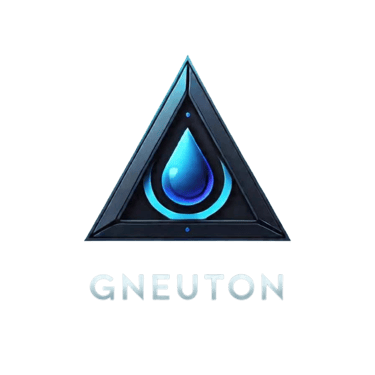The Illusion of Waterless AI: How Closed-Loop Data Centers Shift the Fresh Water Burden to Power Plants
As AI data centers pivot away from fresh water-intensive closed-loop cooling, the hidden fresh water burden doesn’t disappear. It migrates upstream. Utilities are ramping up thermoelectric power plants to meet soaring energy demand, pulling millions of gallons of freshwater daily for steam and cooling. If we don’t rethink the full energy-water equation, we’re trading one crisis for another.
Brad Martineau
10/24/20255 min read


Introduction: The Sustainability Mirage in AI Infrastructure
As hyper-scale AI data centers multiply across the globe, major technology companies are rapidly adopting closed-loop cooling systems. These systems are marketed as waterless solutions, designed to eliminate the evaporative losses that once plagued traditional data center operations. In arid regions, this transition is framed as a triumph of environmental stewardship. However, the reality is more complex. While closed-loop systems reduce direct water use at the data center site, they significantly increase electricity demand. Source; Source 2 That electricity is often generated by thermoelectric power plants, which are among the largest consumers of freshwater in the United States. Source The result is a hidden shift in the water burden rom the data center to the power plant.
Closed-Loop Cooling: A Waterless System with a Hidden Cost
Closed-loop cooling systems operate by circulating refrigerant or dielectric fluid through sealed circuits to absorb and dissipate heat. Source Unlike evaporative cooling, which relies on the phase change of water to cool air, closed-loop systems use mechanical components such as pumps, chillers, and heat exchangers. Source These components require continuous electricity to function, especially in high-density AI environments where thermal loads are extreme. Source
And the electricity penalty is substantial. Industry assessments estimate that closed-loop systems can consume 10 to 40 percent more electricity than evaporative systems for the same cooling output, and many industry experts saying this number may even be higher in the hyper-scale AI data center context. Source This increase is not marginal. A single hyper-scale AI data center these days can draw between 100 megawatts and 1 gigawatt of power, if not more, which is equivalent to the consumption of a mid-sized to large-sized city. Source Electricity rates have already gone up as much as 267% in U.S. regions near major AI data center developments. Source Goldman Sachs estimates that electric rates will continue to skyrocket by as much as 50% by 2027 and by as much as 167% by 2030. Source This elevated energy demand has cascading effects on the power grid and, more critically, on fresh water resources.
The Power Plant Connection: Where the Water Really Goes
To understand the full water footprint of closed-loop cooling, one must examine the source of the electricity that powers these systems. In the United States, over 60 percent of electricity is generated by thermoelectric power plants, which include coal, natural gas, and nuclear facilities. Source These plants rely on steam turbines, which require vast quantities of water for both steam generation and cooling. Source
According to the National Renewable Energy Laboratory, thermoelectric power generation accounts for the largest share of industrial water withdrawals in the country. Source The Natural Resources Defense Council reports that in 2005, power plants withdrew approximately 201 billion gallons of water per day, with most of it used for cooling purposes. Source This means that every additional megawatt of electricity consumed by a data center indirectly increases the water demand at the power plant level. In regions where water scarcity is already acute, this shift can have serious consequences for local communities.
Why Freshwater Demand Will Continue to Rise
Despite the promise of waterless cooling, the expansion of AI infrastructure is poised to increase overall freshwater demand. Source This is due to the nature of thermoelectric power generation and the limitations of current water reuse technologies. Source Colorado-based firm Yes Energy reports that over 200 gas-fired power units are being developed across the U.S., with a combined potential to add 86 GW of electricity by 2032. Source
Several key facts underscore this reality:
• Thermoelectric power plants require water for both steam production and cooling. Even plants with recirculating systems lose water through evaporation and blowdown, necessitating continuous freshwater input. Source
• Combined heat and power plants, which are often used to supply electricity to industrial campuses, also rely heavily on water for thermal management. Their efficiency does not eliminate their water dependency. Source
• Many newer power plants have adopted water reuse strategies, but these systems still require significant volumes of freshwater to maintain operational stability and meet environmental discharge standards. Source
In summary, the electricity required to operate closed-loop cooling systems is not water-neutral. It simply relocates the water demand to another part of the infrastructure chain.
Regional Impacts: The Case of the American Southwest
The consequences of this shift are particularly pronounced in regions like Arizona, Nevada, and parts of California. These states are experiencing rapid growth in AI data center construction, driven by favorable tax policies and abundant land. However, they are also among the most water-stressed areas in the country. Source
Arizona, for example, has seen a surge in hyper-scale data center development. To support these facilities, utilities are expanding natural gas-fired power plants, many of which use groundwater or surface water for cooling. As these plants ramp up to meet the new electricity demand, they will require millions of additional gallons of water per day. Source
This creates a feedback loop in which data centers avoid direct water use but indirectly drive up water consumption at the power generation level. The net effect is a worsening of regional water stress, masked by the optics of waterless cooling.
The ESG Blind Spot: Measuring the Wrong Metrics
From an Environmental, Social, and Governance perspective, the adoption of closed-loop cooling is often celebrated as a sustainability win. However, most ESG frameworks focus on direct water use and fail to account for indirect impacts. Source This creates a blind spot in corporate reporting and public perception. Source
Key questions that ESG leaders must begin to ask include:
• Are we measuring total lifecycle water use, including upstream electricity generation?
• Are sustainability reports accounting for the water intensity of the local grid?
• Are companies investing in water-positive offsets or watershed restoration to balance their indirect impact?
Without answers to these questions, the sustainability narrative around closed-loop cooling remains incomplete and potentially misleading.
Toward a Holistic Infrastructure Strategy
To truly address the energy-water nexus in AI infrastructure, stakeholders must adopt a systems-level approach. This includes rethinking site selection, power sourcing, and water stewardship.
A few strategic interventions can help mitigate the hidden water burden:
• Prioritizing renewable energy sources such as solar and wind can reduce water use, as these technologies require minimal water for operation.
• Investing in on-site energy generation and storage can reduce reliance on thermoelectric power plants.
• Exploring advanced water recovery technologies and atmospheric water generation can offset indirect consumption.
• Deploying regenerative systems like Gneuton’s Zero-Energy Distillation platform can convert low-grade waste heat into clean water, enabling closed-loop resilience without additional energy draw.
• Collaborating with utilities and regulators to align data center growth with regional water availability and conservation goals is essential.
These strategies require coordination across sectors, but they offer a path toward infrastructure that is not only efficient but regenerative.
Conclusion: The Need for Transparent Tradeoffs
Closed-loop cooling systems represent a technological advancement in data center design, but they are not a panacea. By shifting the water burden from the data center to the power plant, they create a new set of challenges that must be addressed transparently and strategically. If the goal of AI infrastructure is to support a smarter, more sustainable future, then its design must reflect the full complexity of the systems it depends on. Waterless cooling that drives up electricity demand, and thereby increases water use elsewhere, is not a sustainable solution. It is a redistribution of impact.
True sustainability will require more than innovation. It will require honesty, integration, and a commitment to regenerative design.
Statements regarding future plans or outcomes of Gneuton reflect current expectations and are subject to change based on operational, regulatory, and environmental factors.
About Bradley J. Martineau
Bradley J. Martineau is the CEO of Gneuton, an innovative technology company delivering massively scalable and affordable, carbon-neutral solution for purifying oilfield produced water and power plant raw water while providing cheap off-grid electricity for AI Data Centers. He is also the Author of the Amazon Best Seller 'The AI-Enabled Executive' and frequently speaks on AI as well as provides strategic and responsible AI consulting for executives and organizations.
DISCLOSURE: The images in this Article were AI-generated. AI was also used in this Article to brainstorm and expand on thoughts and ideas, research articles, and for editing.
DISCLAIMER: The information provided in this article is for general informational purposes only and should not be considered as legal, business, or financial advice. No part of this article is intended to create, nor does it constitute, an attorney-client, financial advisor-client, or professional relationship. You should seek the advice of qualified professionals in the respective fields before making any decisions based on the information provided. Bradley J. Martineau is not responsible for any actions taken or decisions made based on the content of this article.
Innovation
Turning AI Data Centers Fresh Water Positive Now
Efficiency
Sustainability
© 2025. Gneuton. All rights reserved.
Transparency Disclosure: All images & videos on the website were AI generated &/or licensed, except for the profile pictures of the Executive Team.
